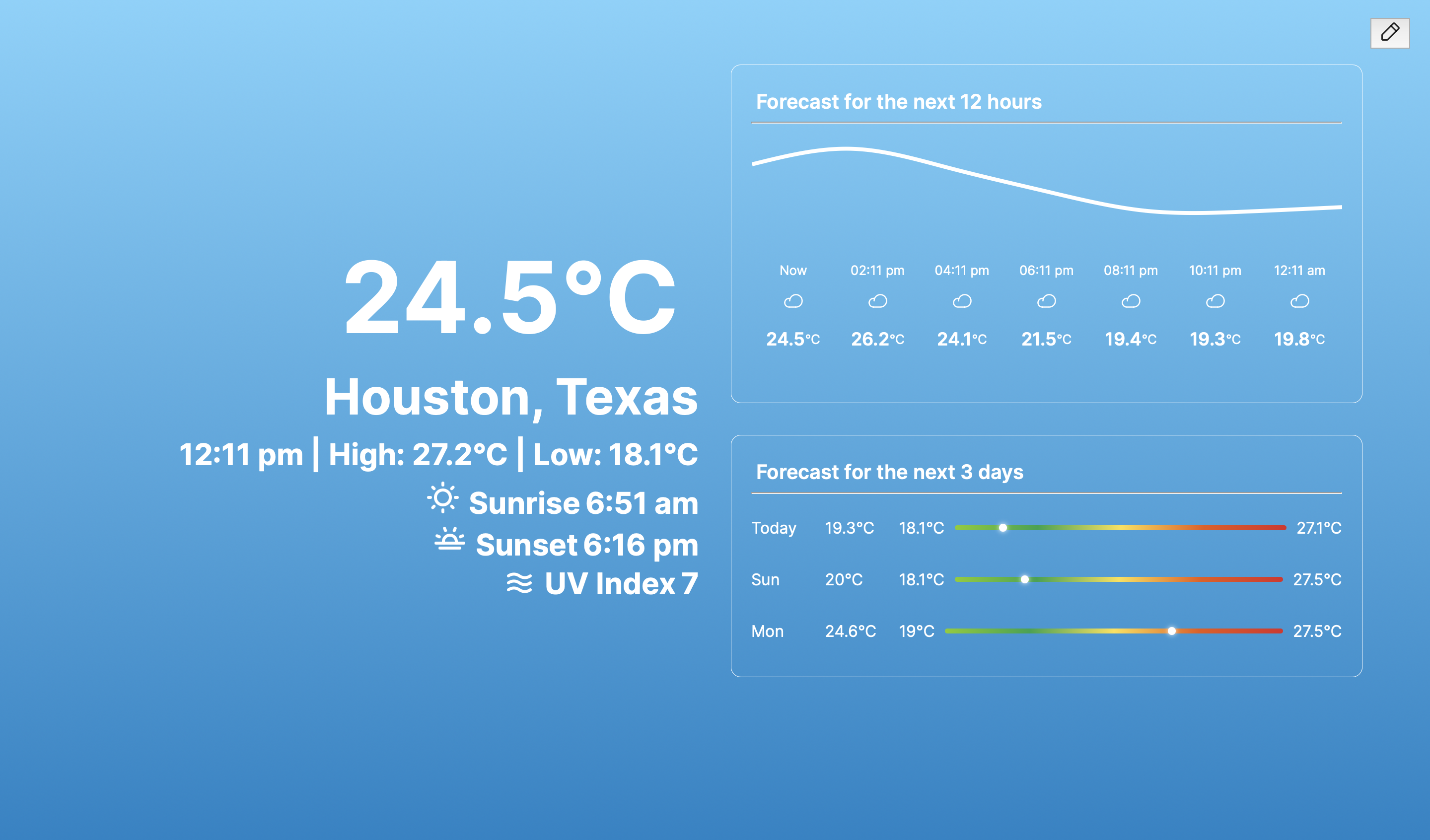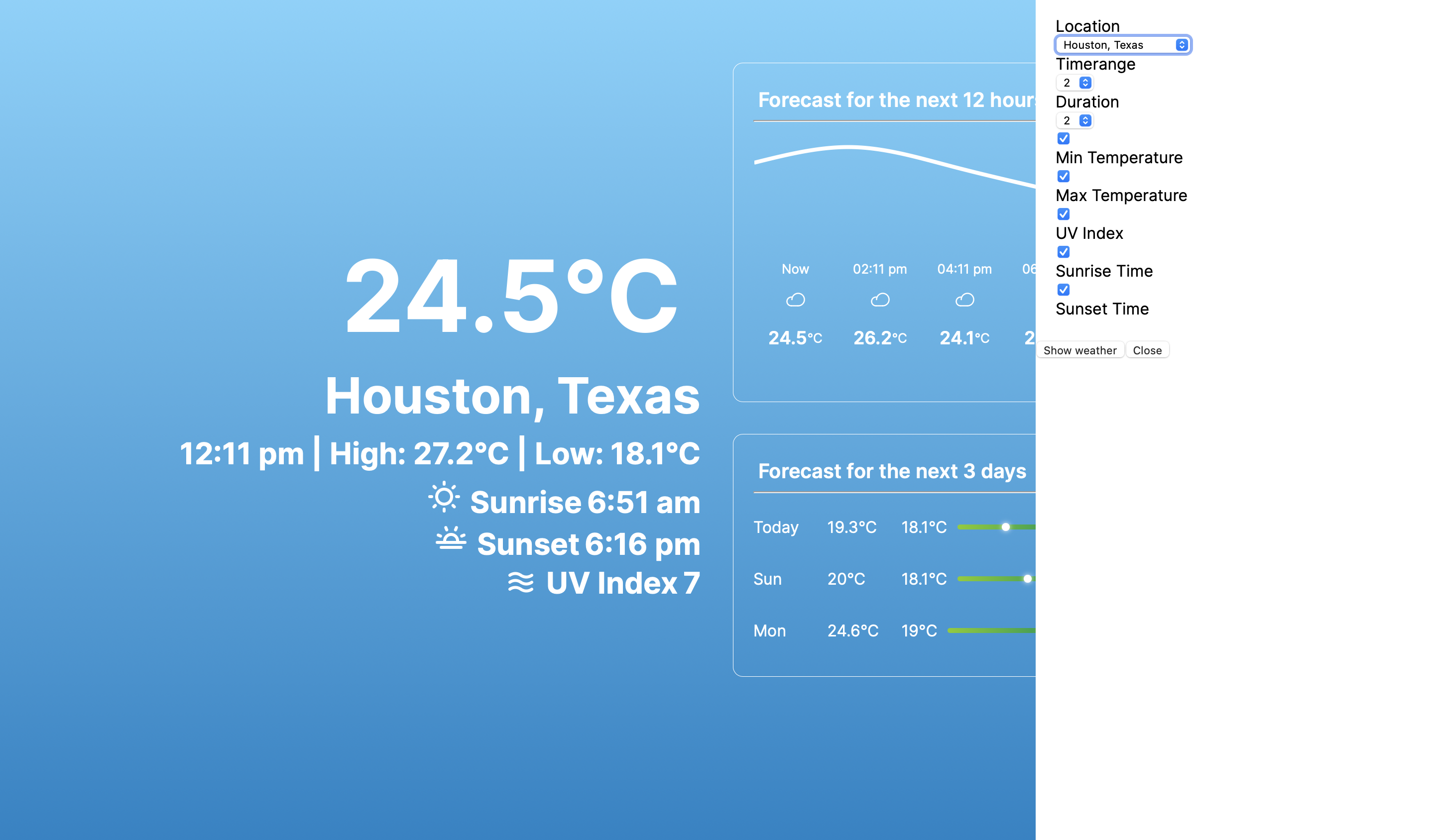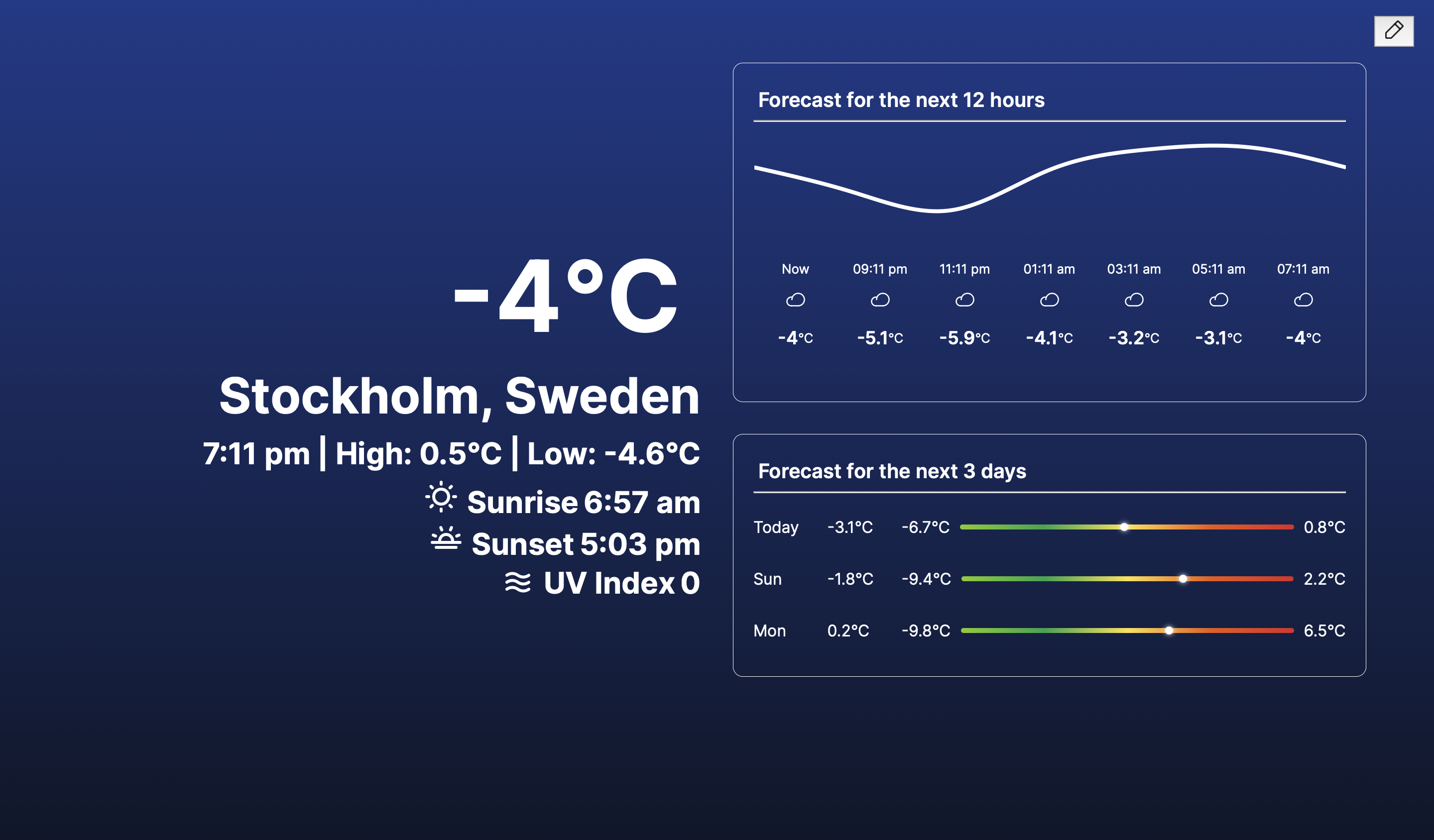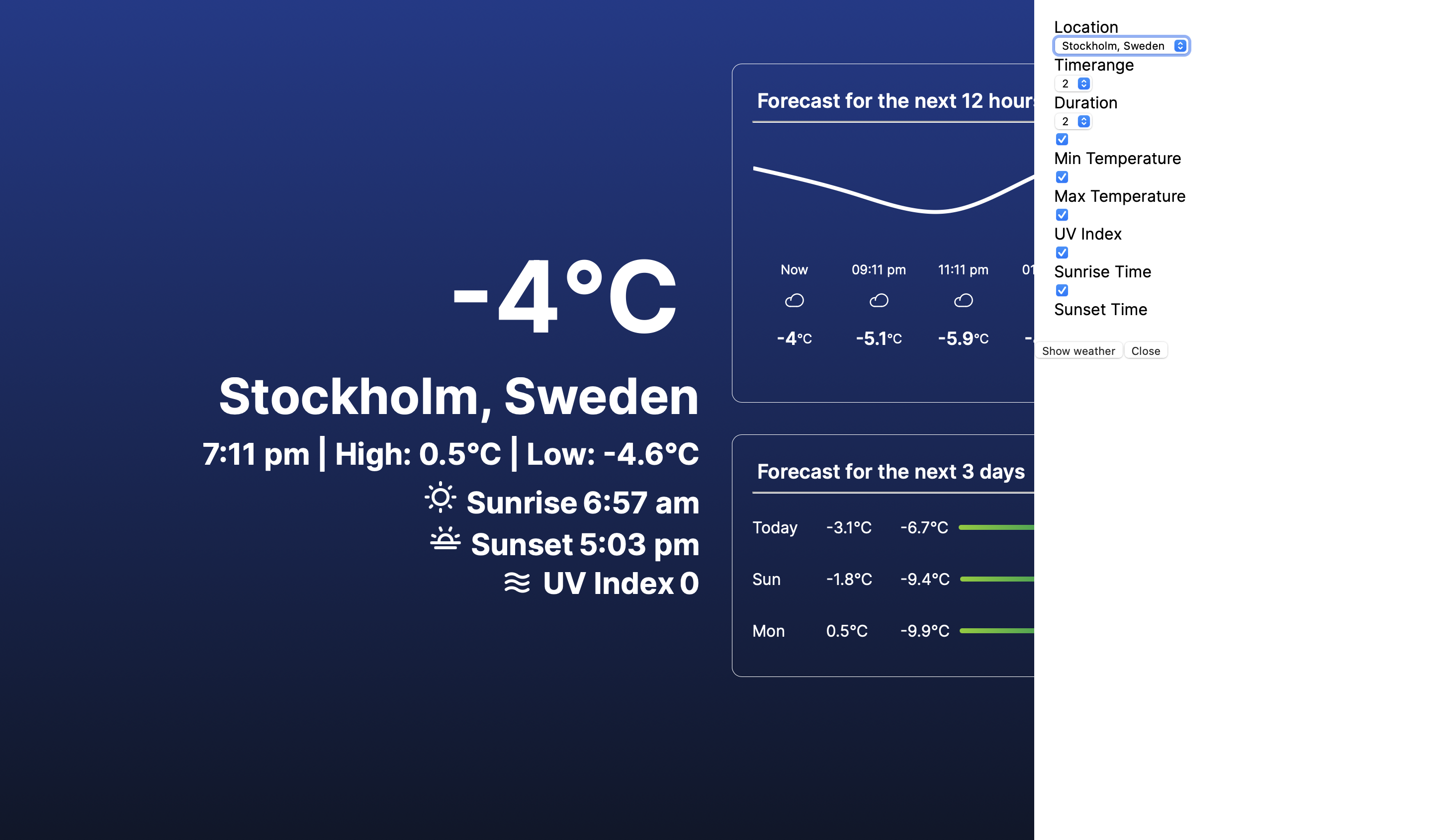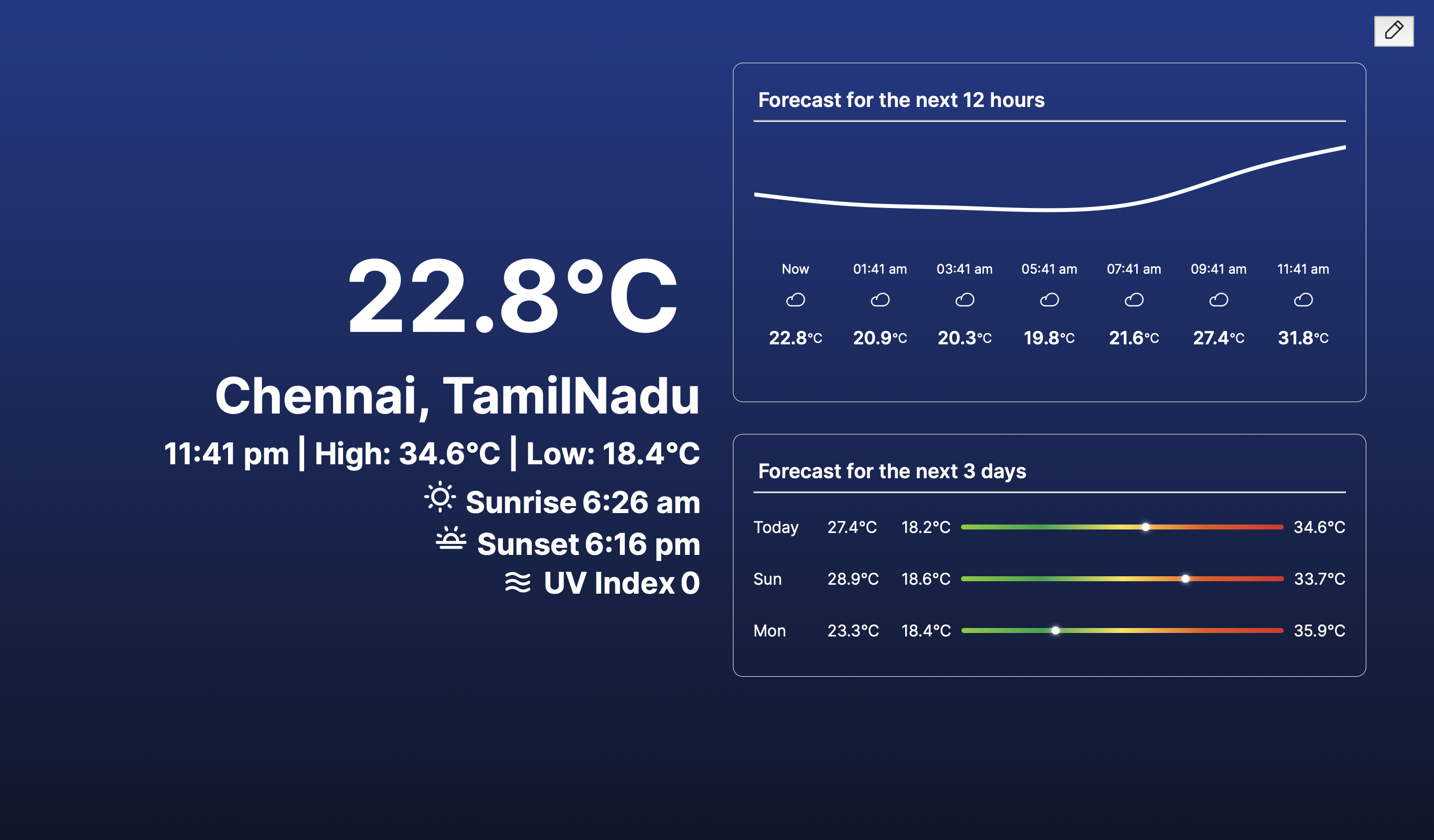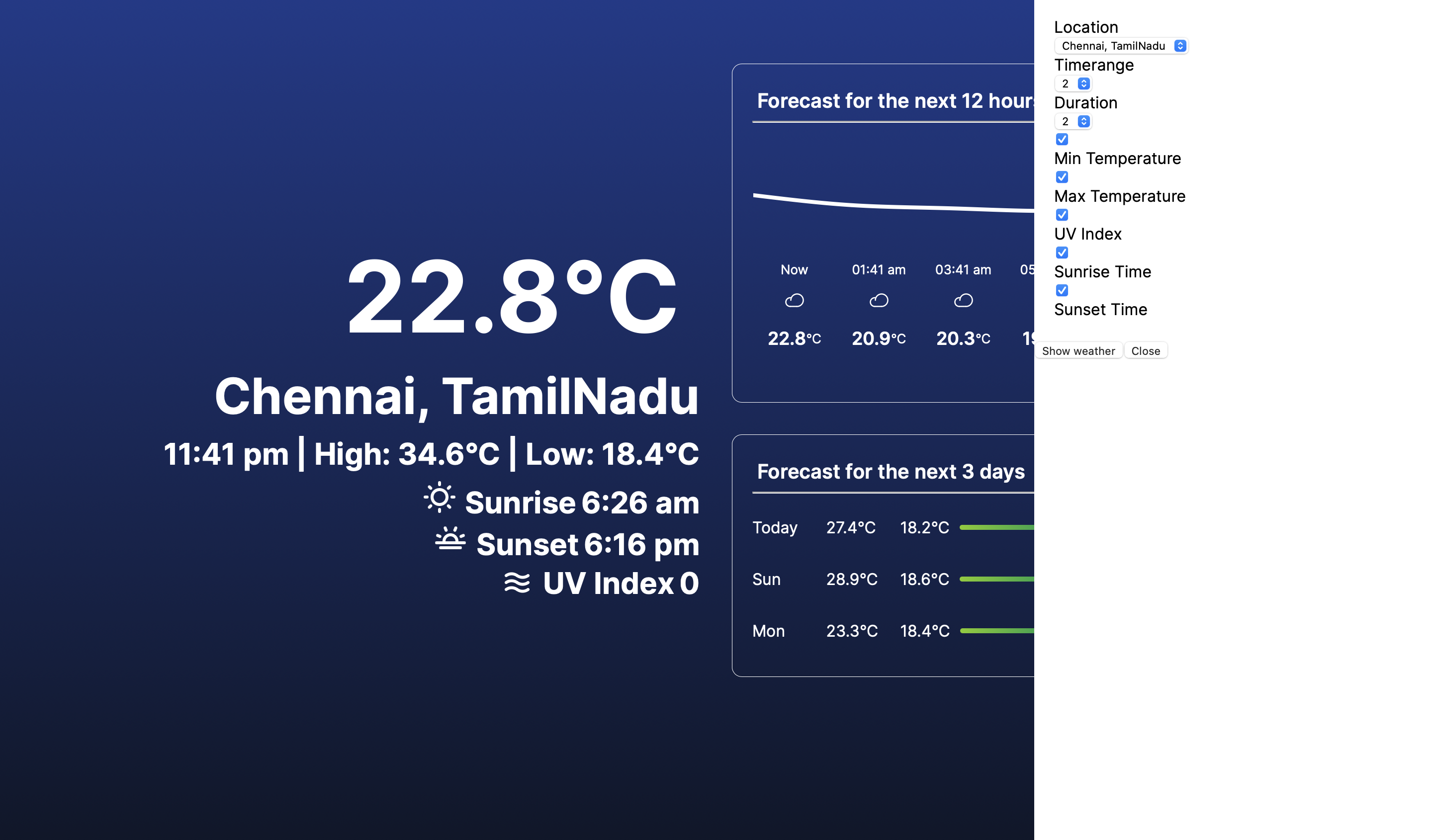This is a Next.js project bootstrapped with create-next-app.
First, run the development server:
npm run dev
# or
yarn dev
# or
pnpm devOpen http://localhost:3000 with your browser to see the result.
By default the application gets the weather data for the location Houston, which can be updated along with other parameters such as
Timerange // This is used to set for how many days from today you want to show the weather of
Duration // This is used to set the intervals between the weather data (Step count)
Min Temperature // Show the minimum temperature or not
Max Temperature // Show the maximum temperature or not
UV Index // Show the UV Index or not
Sunrise Time // Show the sunrise time or not
Sunset Time // Show the sunset time or notAll thest values can be configured in the sidebar as shown below
The app follows a default React app structure. I have created the webapp using NextJS 13 framework.
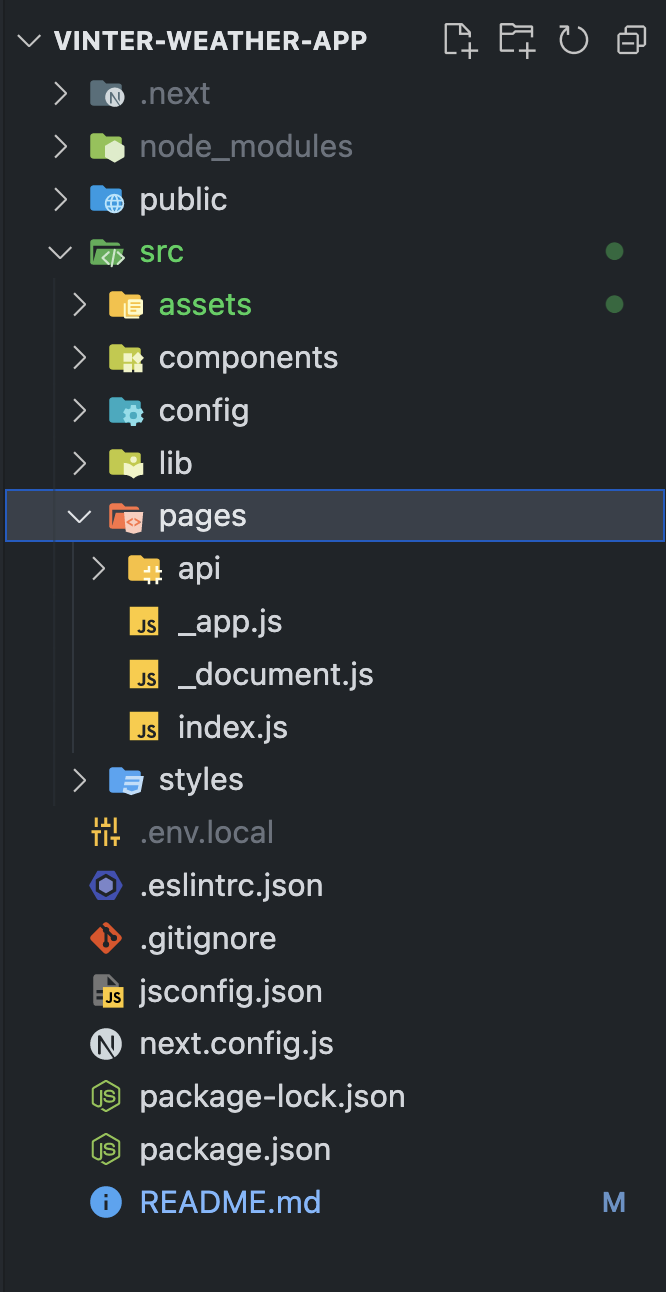
- assets // Contains all the images/video files required for the application
- components // Contains all the small components that are used within the application
- config // Contains all the configuration files. (Example constants.js contains the constant variables or routes used in the application)
- lib // Contains all the libraries that are used in the application (Example dayjs, auth, api)
- pages // Created by default by next js (These are all the pages for the application)
- pages / index // The entry point into the app
- pages / api / *.js // Next JS server app that will be used to make api calls from our client to avoid CORS issues
- stlyes // Contains all the css styles needed for the applicationThe https://login.meteomatics.com/api/v1/token is used to get an access token needed for the apis that are used to fetch the weather from meteomatics.
lib/api.js -> fetchWeatherData() contains the api method to fetch the weather data. Before each call, we will call the
import { LOGIN_URL } from '@/config/routes';
import dayjs from '../lib/day';
import { getStorage, setStorage } from "./storage";
const setAndReturnAccessToken = async() => {
const response = await fetch(LOGIN_URL, { method: 'GET' });
const { access_token } = await response.json();
setStorage('auth', JSON.stringify({ createdAt: dayjs().valueOf(), token: access_token }));
return access_token;
}
export const checkAccessTokenValidity = async() => {
let auth = getStorage("auth") ?? null;
if (auth) {
auth = JSON.parse(auth);
if (dayjs().isAfter(dayjs(auth.createdAt).add(2, 'hours'))) {
return setAndReturnAccessToken();
}
return auth.token;
}
return setAndReturnAccessToken();
}method from lib/auth.js to check if we have a valid token saved in the local storage and If we do, then we check its time validity if the creation time is after 2 hours. If it is, then fetch a new token and save it to the local storage.
Our fetchWeatherData() would look like
import { WEATHER_URL } from '@/config/routes';
import { checkAccessTokenValidity } from './auth';
export const fetchWeatherData = async(config) => {
const token = await checkAccessTokenValidity();
const newConfig = { ...config, token };
const parameters = new URLSearchParams(newConfig).toString()
const response = await fetch(WEATHER_URL(parameters), { method: 'GET' });
return response.json()
.then(({ data }) => data)
.catch(error => console.log(error))
}pages/api/login.js
import { METEOMATICS_TOKEN } from "@/config/routes";
export default async function handler(req, res) {
try {
const baseToken = Buffer.from(process.env.NEXT_PUBLIC_API_USERNAME + ":" + process.env.NEXT_PUBLIC_API_PASSWORD).toString('base64')
const result = await fetch(METEOMATICS_TOKEN, {
method: 'GET',
headers: {
'Authorization': `Basic ${baseToken}`,
'Content-Type': 'application/json',
},
});
const { access_token } = await result.json();
return res.status(200).json({ access_token })
} catch (error) {
return res.status(500).json({ success: false })
}
}pages/api/weather.js
import { METEOMATICS_WEATHER } from "@/config/routes";
export default async function handler(req, res) {
const config = req.query;
let BASE_URL = METEOMATICS_WEATHER;
BASE_URL += config.datetime + "P" + config.timerange + "D:PT" + config.duration + "H/";
BASE_URL += config.parameters + "/";
BASE_URL += config.coordinates + "/";
BASE_URL += `json?access_token=${config.token}`;
const response = await fetch(BASE_URL, {
method: 'GET',
headers: {
'Content-Type': 'application/json',
}
});
return response.json()
.then(({ data }) => {
const processedData = { location: "", weatherData: {} };
data.forEach(({ parameter, coordinates }) => {
processedData.location = { lat: coordinates[0].lat, lon: coordinates[0].lon };
const timestamps = coordinates[0].dates;
timestamps.forEach((timestamp) => {
processedData.weatherData[timestamp.date] = { ...processedData.weatherData[timestamp.date], [parameter]: timestamp.value }
});
});
return res.status(200).json({ data: processedData })
})
.catch(error => {
return res.status(500).json({ success: false, error })
})
}The data coming from the weather api is a little complex, so we will clean and process the data to our needs.
It was a challenging task building the entire UI view without any given design or app architecture in 2 days. Although I was able to make the application work, I still wanted to make the following improvements if there was more time and if css frameworks were allowed
- Move application css to Tailwind CSS for faster development and better look
- Design it on Figma before creating the UI
- Break down current components into smaller components
- Clean up the code to look more organized than current
